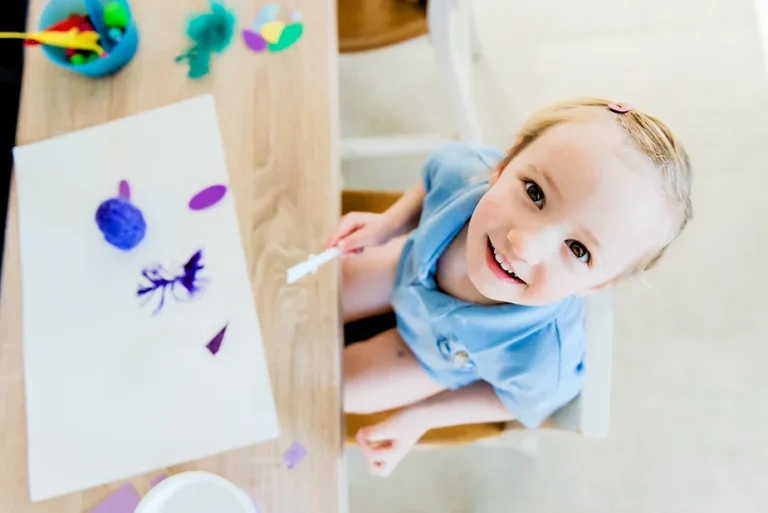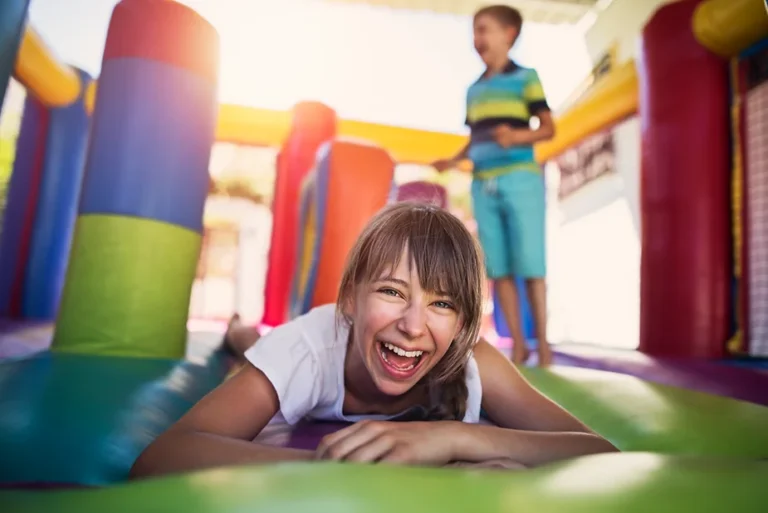How to Create an Awesome Ocean Themed Sensory Bin

This post may contain affiliate links and I could earn a small commission at no cost to you. However, I will never recommend anything that I do not believe in or use myself. You can read more about my disclosure policy here.
In this post I’ll share how to set up an ocean themed sensory bin using kinetic sand as the base, complete with sea creature sorting, creative play ideas, and more!
Play isn’t just about fun—it’s a cornerstone for learning and growth. Children, with their boundless curiosity, learn best when they’re fully engaged, actively exploring, and immersing themselves in experiences that awaken their senses.
This is where the magic of messy play comes into play. Sensory bins, with their fascinating textures, colors, and hands-on exploration, have emerged as a dynamic tool that nurtures children’s development in delightful and unexpected ways.
In this post, we will delve into the world of sensory bins and explore the myriad ways they can positively impact children’s learning and development while celebrating the joy and importance of messy play.
Make sure to check out our list of essential sensory bin supplies to have on hand, making it easy to set-up multiple different sensory bins in seconds!
Let’s dive in!
What is “Messy Play”
Messy play is a dynamic and hands-on approach to learning that involves children engaging with a variety of materials in unstructured and sensory rich ways. It’s about letting young minds explore, create, and discover through activities that are delightfully untidy.
Whether it’s squishing fingers into paint, pouring water, molding clay, or playing with sand, messy play embraces the idea that getting messy is not only okay but essential for a child’s growth and development.
Benefits of “Messy Play” for Children
The benefits of messy play for young children are profound and far reaching. Beyond the surface level fun, messy play offers an array of developmental advantages.
Through tactile experiences, children enhance their sensory perception, refining their understanding of textures, temperatures, and cause-and-effect relationships. This exploration also lays the groundwork for cognitive growth, as children experiment, problem-solve, and develop a deeper understanding of the physical world.
Messy play is a gateway to the development of fine and gross motor skills, as children manipulate materials, pour, scoop, and mold. These activities strengthen hand-eye coordination, dexterity, and spatial awareness.
Furthermore, messy play ignites creativity and imagination, allowing children to invent, transform, and engage in imaginative narratives as they interact with the materials in front of them. In essence, messy play is a vital tool that fosters holistic growth by engaging the senses, honing motor skills, and nurturing the seeds of creativity in young minds.
Related: Why Sensory Play Is Important For Child Development
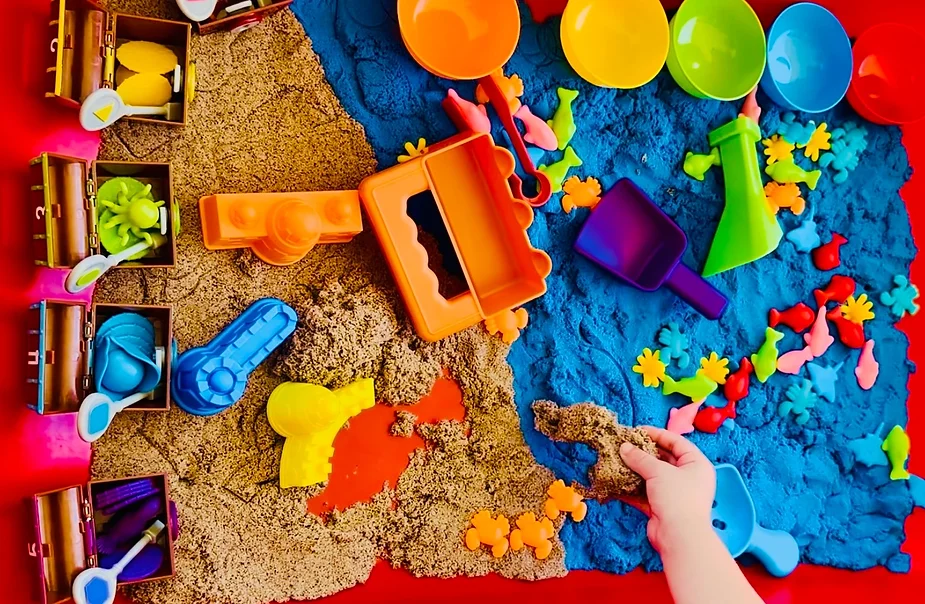
Benefits of Sensory Bins for Children
1. Fine Motor Skills
Sensory bins are a valuable tool for enhancing young children’s fine motor skills. These tactile containers, filled with a variety of tactile materials like sand, beans, rice, water or even shaving foam, encourage kids to engage in activities that require precise finger and hand coordination.
As they scoop, pour, and manipulate these materials, children develop essential skills such as hand-eye coordination, finger dexterity, and grip strength. Sensory bins provide an enjoyable and effective way to support the development of fine motor skills crucial for tasks like writing and self-care.
2. Cognitive Development
Sensory bins offer a plethora of cognitive benefits. As children manipulate and explore different textures, they are building essential cognitive skills such as observation, comparison, and classification.
Pouring, scooping, and transferring materials from one container to another help develop fine motor skills, hand-eye coordination, and spatial awareness.
These activities also encourage problem-solving skills as children experiment with cause-and-effect relationships and discover how materials interact.
3. Language and Communication Skills
Engaging in sensory play provides ample opportunities for language development. As children engage with the materials, they can describe what they are doing, feeling, and experiencing.
Parents and caregivers can facilitate conversations by asking open-ended questions, expanding vocabulary, and encouraging children to articulate their thoughts and observations.
4. Sensory Exploration and Regulation
Sensory bins enable children to explore their senses in a controlled and guided environment. Through tactile, visual, and auditory experiences, children learn to regulate their sensory responses and develop a greater understanding of their own sensory preferences.
This self-awareness can be particularly beneficial for children with sensory processing disorder or sensory challenges.
Related: Common Warning Signs Of Sensory Processing Disorder In Kids
5. Creativity and Imagination
One of the remarkable aspects of sensory play is its ability to ignite creativity and imagination. Children can transform simple materials into various scenarios, from building sandcastles to creating imaginary landscapes.
This type of play encourages divergent thinking and fosters imaginative play, which are essential for creative development.
6. Social and Emotional Growth
Sensory tables also promote social interactions and emotional development. When children engage in sensory play together, they learn to share, take turns, and collaborate. Working alongside peers encourages empathy, cooperation, and the development of social skills.
Additionally, sensory play can serve as a calming and therapeutic activity, helping children manage stress and anxiety.
How to Create an Awesome Ocean Themed Sensory Bin
Dive into the depths of creativity and exploration with an awesome ocean-themed sensory bin that’s sure to captivate young minds.
Supplies Needed
- Plastic Bin or Sensory Table: A large plastic bin (or any container big enough for your child to play in). These are my favorite options: a sensory bin with a storage lid for a smaller setup, or a larger sensory table for more expansive play.
Related: Sensory Bin Supplies: What You Need To Have
Directions for Setting Up an Ocean Themed Sensory Bin
Creating an ocean themed sensory bin using kinetic sand as the base is a delightful and educational way to engage young learners in a multisensory adventure.
Step 1: Choose Your Bin
Start by picking a container to use as your bin. A plastic bin or large sensory table works great because they give your little ones enough space to dig around but not so much room that things spill everywhere.
Step 2: Layer Your Base
To set up this captivating play space, begin by filling a shallow container with kinetic sand, which mimics the texture and movement of real sand. This tactile foundation instantly transports children to the depths of the ocean, where they can explore and discover a world of marine life.
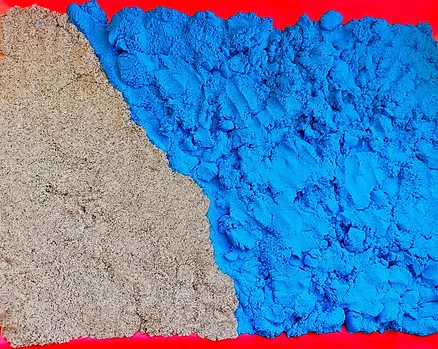
Step 3: Add sea Creatures and Extras
Enhance the aquatic ambiance by adding sandcastle molds, pirate treasure, and an array of sea creature figurines, such as fish, crabs, and starfish. These captivating marine inhabitants not only stimulate visual interest but also invite sorting and categorization. Children can engage in imaginative play by creating underwater scenarios and arranging the sea creatures in different ways.
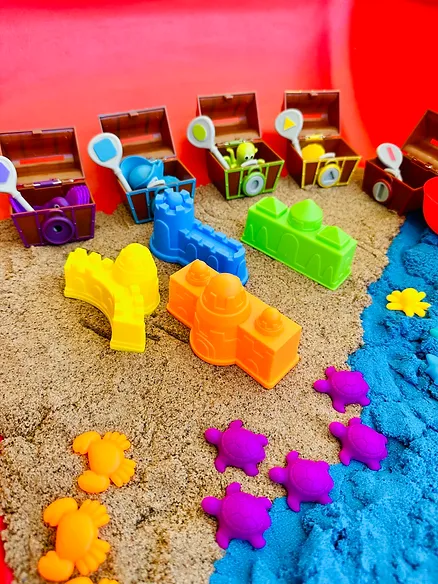
Step 4: Provide Tools for Exploration
Introducing tools like tweezers, scoops, and cups to the sensory bin amplifies the learning experience. Children can use tweezers to practice fine motor skills as they pick up and manipulate the sea creatures. Scoops and cups offer opportunities for imaginative exploration as children pretend to scoop and pour “ocean water” or create sandcastles for their sea creature friends.
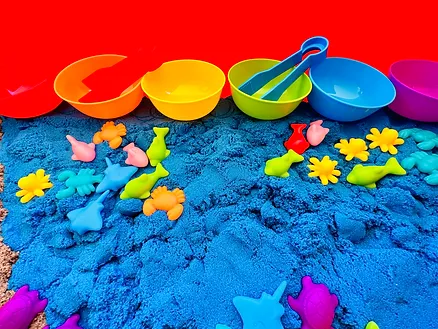
Ideas for Play Within the Ocean Themed Sensory Bin
1. Rescue Mission
Hide sea creatures in the sand and have children use tweezers to “rescue” them. This activity hones fine motor skills and adds an element of excitement.
2. Sea Creature Sorting
Encourage children to sort the sea creatures by color, size, or type using tweezers or their hands. This activity promotes cognitive skills like classification and pattern recognition.
3. Underwater Exploration
Provide magnifying glasses for a closer look at the sea creatures. Children can examine details, textures, and patterns, enhancing their observation skills.
4. Sandcastle Creations
Use cups to mold and stack kinetic sand into sandcastles or underwater landscapes, fostering imaginative play and creativity.
5. Sensory Play
Let children freely explore the texture of kinetic sand and the sea creatures using their hands, promoting sensory exploration and tactile awareness.
Related: Why Sensory Play Is Important For Child Development
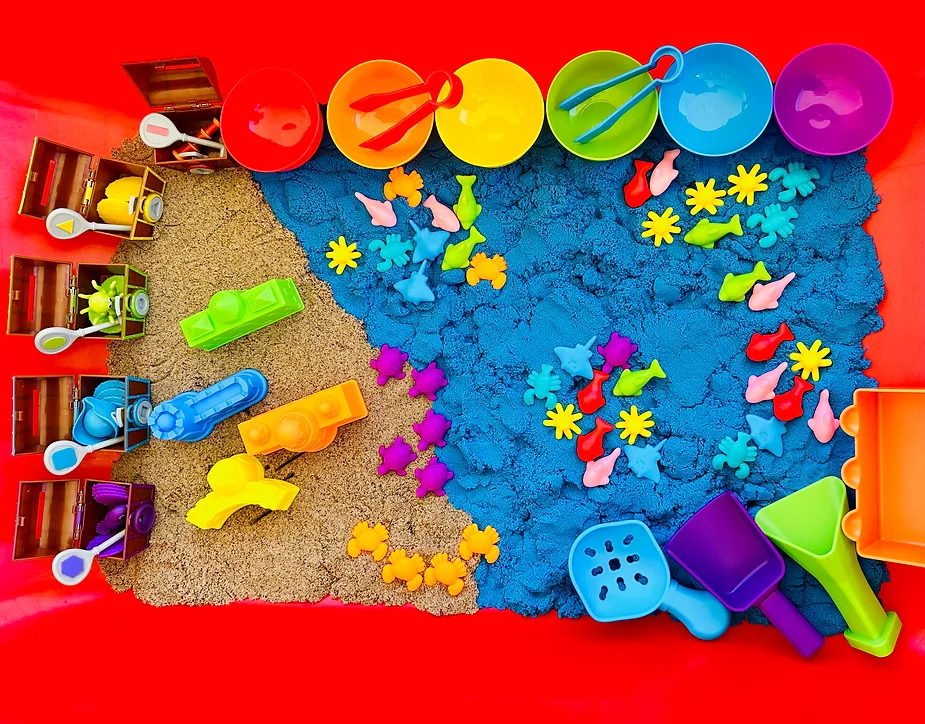
Final Thoughts
This hands-on adventure transforms kinetic sand into an underwater playground where exploration and discovery take center stage.
As children immerse themselves in this ocean themed sensory bin, they’re not only having fun but also engaging in a rich learning experience that fosters fine motor skills, imaginative play, and cognitive development.
Recommended
- Why Sensory Play Is Important For Child Development
- Sensory Bin Supplies: What You Need To Have
- 15 Fun and Engaging Screen Free Indoor Activities for Young Kids
- 10 Exciting Outdoor Summer Activities for Young Kids at Home

